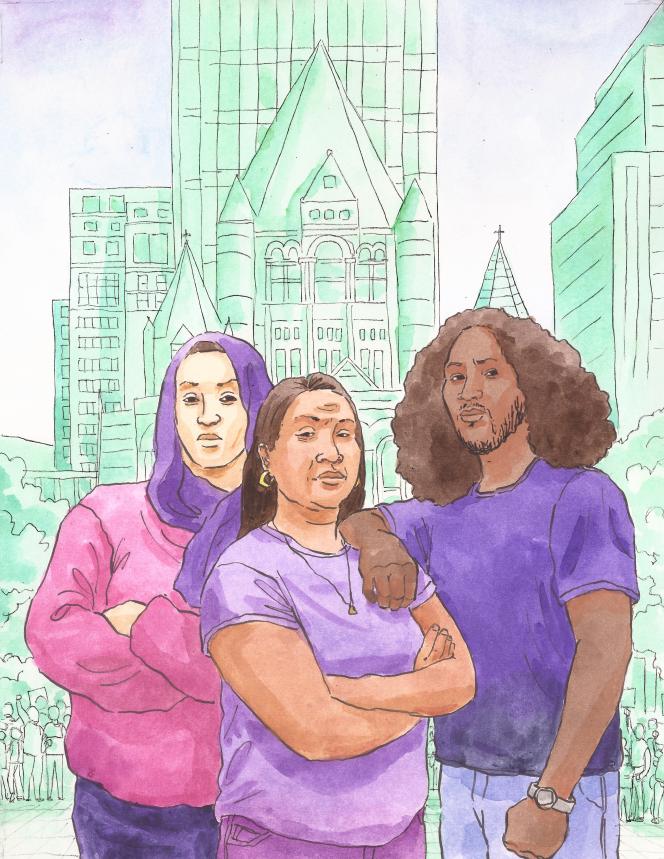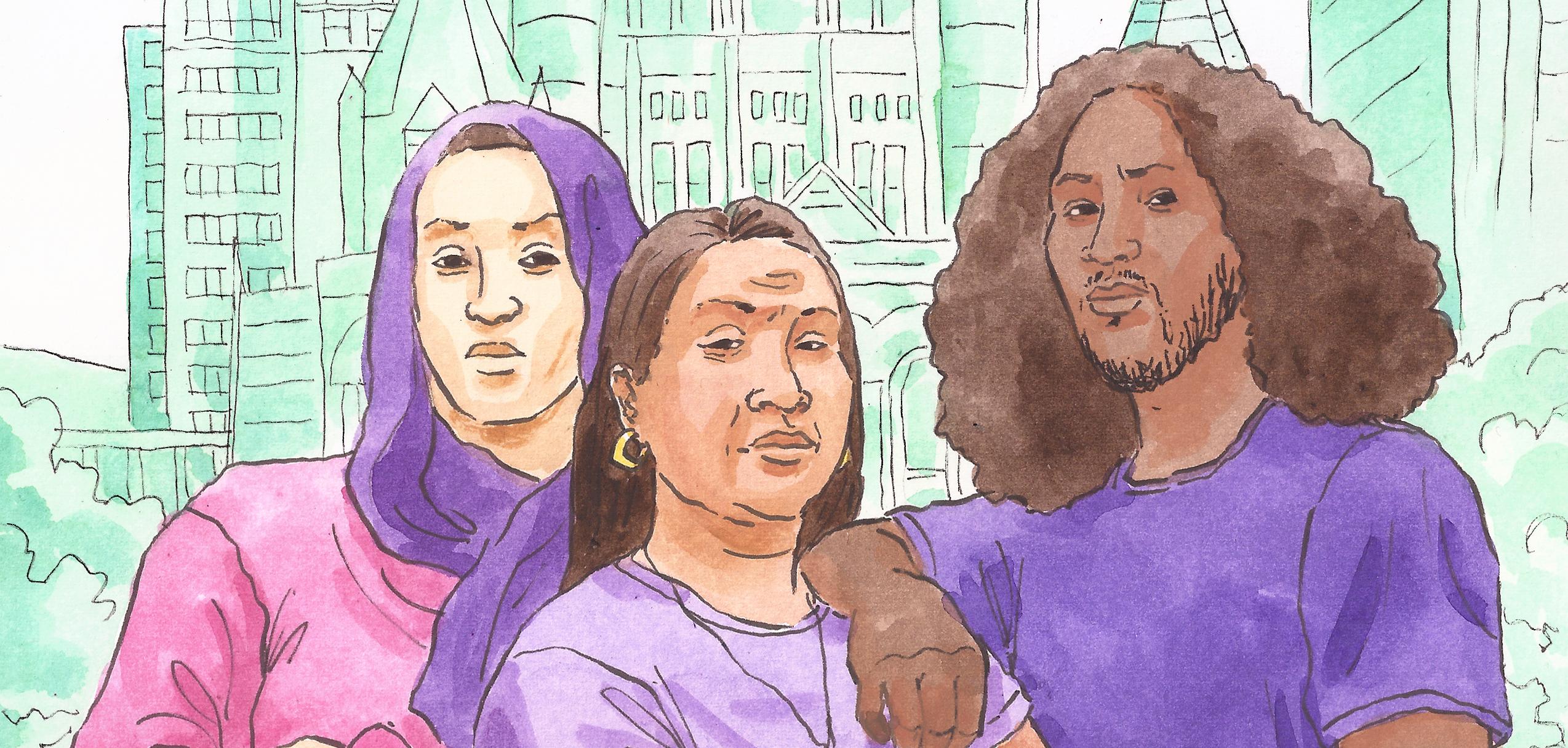Can you explain the concept behind the cover art?
My concept for the cover art was to think about solidarity. I just wanted to show a mixture of different types of people standing together, amongst a protest. I set it in Boston because PRA’s out there in Boston, and I wanted to put it close to where PRA is.

What does solidarity mean to you?
I often think if you’re an individual—whether you’re activist or not—you can do something by really learning about your specific area. I think oftentimes people get really overwhelmed and decide to just walk away or think, “It’s too much. I just can’t do it.” And so solidarity to me is learning about your issue very distinctly and very intimately and then being able to share that with other people who also know their issue very distinctly.
And when they make the call to say, “Hey, we need you to come for this, or call this person, or email that person, or stand up for this,” you come because you’re standing in solidarity with them. And when you cultivate relationships like that, you help their cause and hopefully they’ll help yours.
But I think you learn a lot more rather than if you were trying to say, “Let me learn about this and this and this and this and this.” It’s too much. So one issue at a time.
What drew you to art as a medium of resistance?
When I was a kid, graffiti was the form of artwork I was really obsessed with. I grew up with parents who were activists who were always talking about some of the isms and issues. And although I heard it and absorbed it, it wasn’t something that was a passion of mine. Art was the thing I was passionate about. And when I became a teen, I started to see graffiti artists use their art form to talk about some of those same issues my parents were talking about, and even other ones as well. That was very much the initial inspiration.
What is a source of hope for you in this moment of global resistance?
I think the source of hope for me is people connecting the dots and seeing the similarities between themselves and Nepal, or Indonesia, or Palestine, or people in the Congo, or in France. I think connecting the dots and seeing the similarities gives me hope.
I feel like for someone who grew up in the States, it’s very common for people to speak only English and only to understand one language. And so people learning more languages and therefore understanding a greater worldview gives me hope.
There’s so much done in this country to insulate people from not only what their tax dollars do but how they are perceived and how their government acts all over the world. And so they often will say things that make it clear that they don’t understand what it’s like for people on the other side.
So I think seeing all these cases of people struggling now and in the past and connecting the dots gives me hope, because I hope that people will be able to understand not only their connections in terms of what they’re struggling for, but also people in power, the ruling class, elites—how they behave not just here but abroad, and how they’re all connected.

